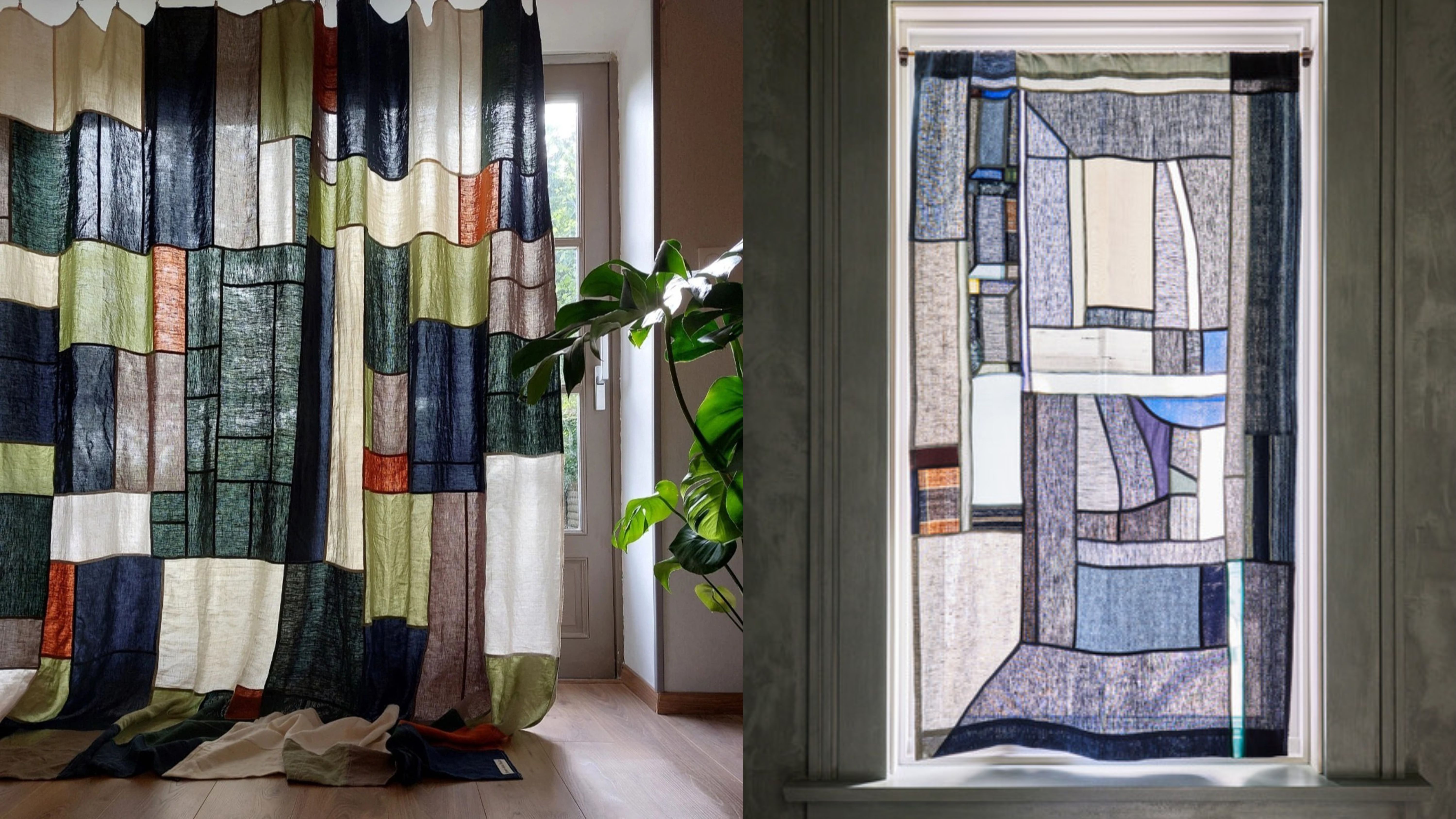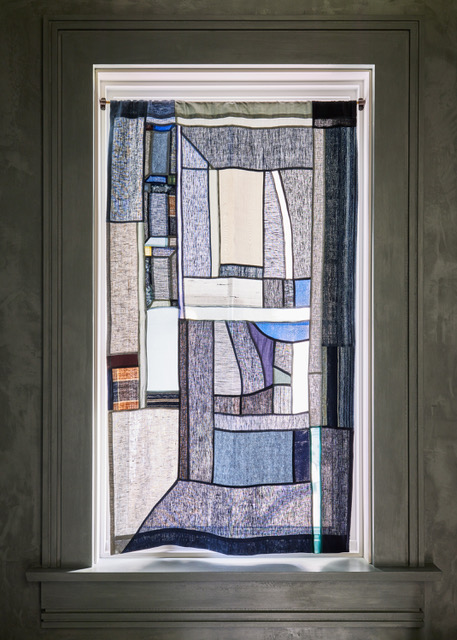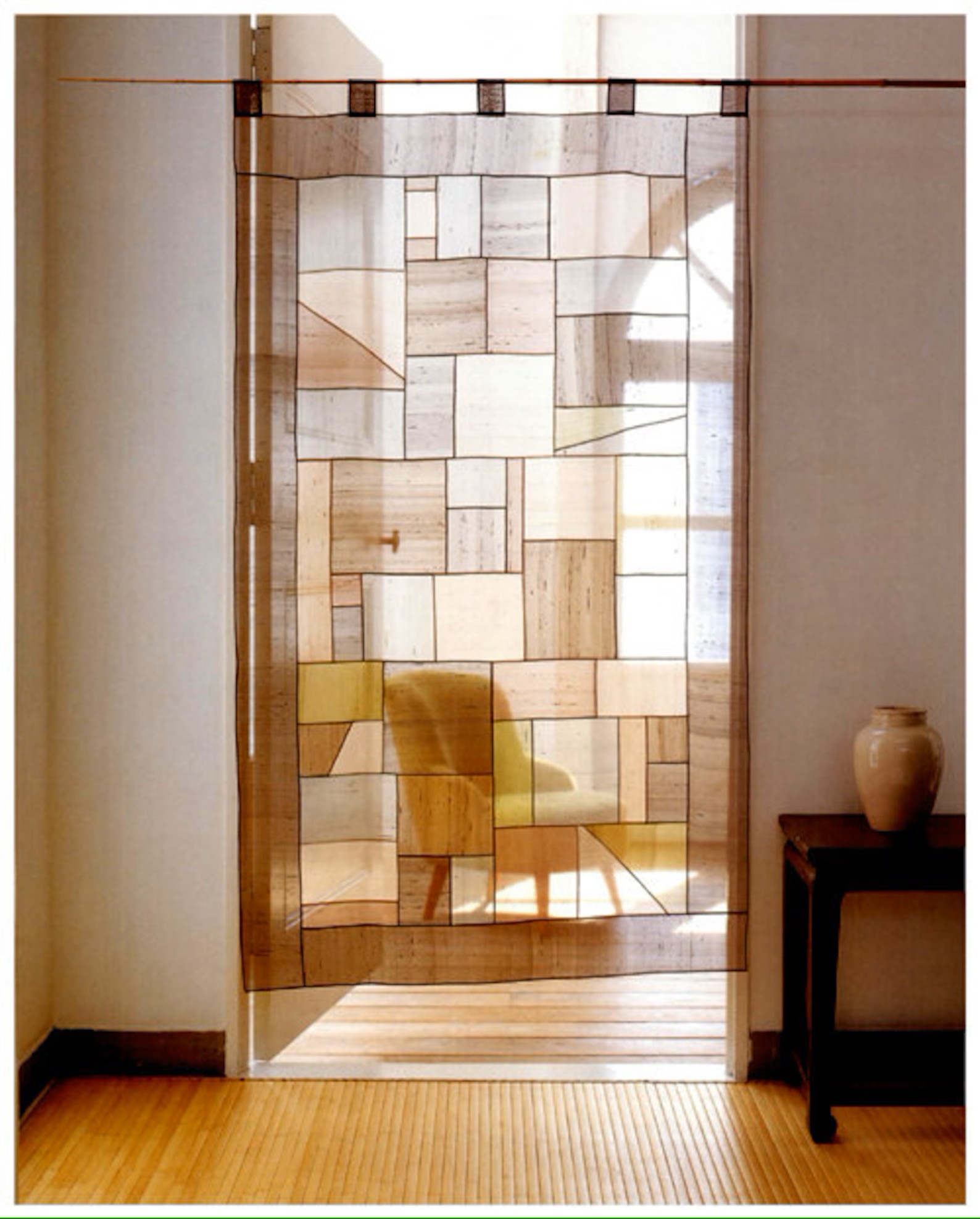
As the days get shorter, and light and color become more precious commodities, finding ways to thoughtfully bring bright elements into your home is a design must. While adding color usually makes us think of bold courses of action, like pulling out a paint can or hitting order on a statement piece of furniture, I've just found an easier (and more interesting) approach.
"Pojagi" is a sheer tapestry with Korean heritage that offers a more subtle and thoughtful way into color. Reminiscent of sheets of stained glass, they float elegantly, add artistic flair, and will, I think, keep you smiling through the colder months.
It's a different take on current interior design trends, one steeped in rich history and significance. Sometimes it's easier to commit to small, visually interesting moments of color, and pojagis are the perfect pieces to experiment with. To that end, I've done some digging to unearth a little bit more about them, some affordable options to shop, and guidance from the experts on how to style them in your space.

What is a "pojagi"?
Pojagis are traditional Korean patchwork cloths that have been around for centuries but are starting to find their way into more contemporary home settings. Studio principal Ju Young Oh of StudiOH, a New York-based design firm, explained to me that "Pojagi, the ancient Korean art of cloth wrapping, transcends mere functionality to become a significant cultural statement. Each carefully stitched fabric piece forms a harmonious whole, creating a visual story that speaks of heritage, connection, and artistry."
Typically, pojagis are made of semi-transparent fabrics like silk or linen that can be hung over windows to diffuse the light, or directly on the wall (the perfect living room art idea). Interior designer Kristin Fine, co-founder of The 1818 Collective, says that no matter how you style a pojagi, she sees them as works of art. The patchwork design of these Korean cloths emulates a modern stained glass window effect, but with a charming touch of artistry that keeps it feeling airy and elegant.
"Like any artwork, it brings beauty and an artist's point of view into the space," says Kristin. "I particularly love how the light interacts with the works, and the undeniable ability to see the hand of the maker in these pieces — no two are alike."
Shop Pojagi Patchwork Designs
Price: $343.13
Designed in France, this Pojagi-inspired piece is available in two sizes. They're made-to-order so you can even consult with the designer on your choice of color and size.
Price: from $640
While expensive, this curtain has been made using traditional Korean patchwork skills but has adopted a more contemporary style. There are four sizes to choose from, and it's currently 20% off.
Price: $171.57
Made from pure linen, the colors in this pojagi-style curtain have been created and eco-printed naturally using alder cones and onion skins. It's smaller than some of the other examples and would make for a great piece of wall art.
Price: $27.63, Was: $57.99
A bit of a further interpretation of a traditional pojagi, this curtain from Wayfair captures its essence, but is one that the more minimalist amongst us can get on board with. And it's on sale!
Price: $49
Available in three colors — honey (shown), green multi, and ivory — this pojagi-inspired curtain from Urban Outfitters is a very affordable option for those wanting to try this style.
Price: from $90
This colorful, custom-made pojagi has been made in the United States using traditional Korean patchwork techniques. Every piece is completely unique and often uses recycled fabrics.
How to Style a Pojagis in Your Home

When it comes to styling, I would consider this piece an interchangeable decorative item. During the day, when the light is the strongest, having a pojagi in your window will fill the room with colorful, divided light. When using them as window coverings, "the translucent fabric becomes living artwork, creating different expressions, depth, and dimension on the walls as sunlight moves throughout the day" adds Ju.
Because of their likeness to stained glass and their delicate sheerness, pojagis are also a great living room curtain idea. If you already have a curtain you cannot part with — don't worry, there options for incorporating a pojagi into your home are endless.
"I would love to see these on windows, in-between spaces in passages, and of course on any wall," says Kristin. I can see these working incredibly well as a funky room divider idea. Similarly, placing a pojagi across your dining table as a runner is a stunning way to incorporate texture and geometric patterns into your tablescape.
As for using a pojagi as a room diver, if you have an open-concept floor plan, you can hang a pojagi to add a splash of color while still keeping that airy, open feel in the room. There's nothing like giving your favorite art pieces a functional purpose.
Ju says, "Incorporating pojagi into your interiors isn't just about design; it's about infusing a space with stories, history, and subtle elegance that invites both contemplation and admiration."
It is a timeless, refined touch that effortlessly bridges the past and present. Adding a pojagi to your home is an invitation for both light and color. As we enter the fall season, there is no better way to add a chic bit of soul to your space.







